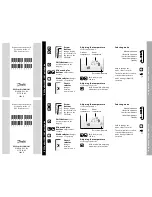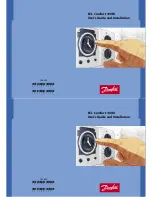
IM-P102-04
CTLS Issue 7
26
6.1 Preliminary procedure
Before undertaking the following fault finding procedure, ensure the valve has been isolated and that upstream
and downstream pressures are zero. Possible fault checks are given in a logical order below.
6.2 Temperature in plant too high
6.2.1
A rise in temperature above the normal control setting could be caused either by the valve failing to
shut off or a breakdown in the control system. Check as follows:
6.2.2
With the plant up to temperature and steam on the valve remove the sensor bulb and allow to cool.
Undo the three screws and remove the adjustment head.
This will release all pressure on the pilot valve plunger so that valve should be in the open position.
6.2.3
This plunger can be depressed and released by hand to check the operation of the valve, depression
of the plunger causing the main valve to close and the temperature in the plant to fall.
6.2.4
If this check indicates that the valve is closing properly the fault must lie in the control system which
should be replaced as Section 4, Steps 60 to 67.
If the check shows that the valve is not closing properly this could be caused by one of the following:
-
Control orifice is blocked. For access remove pipe assembly and clear orifice with fine wire. (Do not
use a drill or any other tool which will enlarge this orifice).
-
Pilot valve is not seating. Examine and clean. For access see Section 4, Steps 1 to 15.
Before stripping down to check on either pilot or main valves see Section 6.3.1 which follows.
-
Main valve is not seating or the main valve push rod is sticking. Examine and clean. For access see
Section 4, Steps 34 to 59.
Before stripping down to check on either pilot or main valves see Section 6.3.1 which follows.
6.3 To check on valve closure
6.3.1
With the plant up to temperature isolate the valve and zero pressure.
6.3.2
Turn the adjustment knob to a lower temperature to enure that the main valve should be fully closed.
6.3.3
Undo pipe union in pilot valve housing.
6.3.4
Turn steam on to valve slowly.
6.3.5
If steam is discharged through the tapped hole in the pilot valve housing from which the union has
been screwed, it indicates that the pilot valve is failing to seat. (See Section 4, Steps 1 to 15. If steam
is discharged through the exposed end of the copper pipe it indicates that the main valve is failing to
seat. (See Section 4, Steps 34 to 59).
6. Fault finding
Summary of Contents for 37D
Page 2: ...IM P102 04 CTLS Issue 7 2...
Page 28: ...IM P102 04 CTLS Issue 7 28...



































